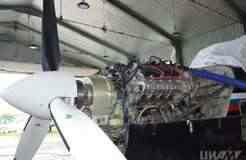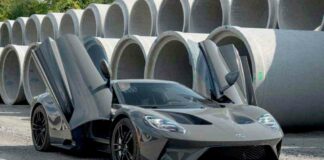Bugatti has once again defied convention, unveiling the Tourbillon, a hypercar powered by an astonishing 8.3-liter naturally aspirated V16 engine. In an era dominated by downsizing, turbocharging, and electrification, Bugatti has doubled down on displacement and mechanical drama, delivering a powertrain that is both a throwback to automotive excess and a bold statement about the enduring appeal of combustion. This isn’t just a new engine; it’s a defiant celebration of mechanical artistry, seamlessly blended with hybrid technology to redefine what a European supercar can be.
Зміст
The Engine That Refuses to Die
For decades, the European supercar landscape has been defined by relentless horsepower figures. But the Tourbillon’s V16 isn’t about brute force alone. It’s about how that power is delivered. Unlike the laggy surge of turbochargers, Bugatti’s V16 offers a progressive, linear build-up of power, reminiscent of classic grand prix engines. Combined with three electric motors – one on the front axle and two at the rear – the powertrain produces over 1,800 horsepower, delivering instant torque and all-wheel-drive agility. The result is a seamless, unrelenting surge of power that feels both visceral and refined.
The End of an Era, the Dawn of a New One
The V16 marks the end of Bugatti’s legendary W16 era, a power unit that shattered expectations with the Veyron and Chiron. The W16 was a marvel of engineering complexity, but as emission regulations tightened, its turbocharged excess began to show its age. The V16 is a deliberate evolution: lighter, more responsive, and paired with a cutting-edge hybrid system that ensures Bugatti can meet future standards without compromising its DNA. This isn’t just an engine change; it’s a philosophical shift, from bravado to refinement.
A Mechanical Sculpture: Inside the 8.3L V16
Co-developed with Cosworth, the 8.3-liter V16 is a technical masterpiece. Stretching nearly a meter in length, it’s a long, elegant configuration that recalls racing engines of the 1960s, yet built with 21st-century materials. Revving to 9,000 rpm, it delivers a spine-tingling sound that is utterly alien in the age of electric silence. Titanium internals keep weight down, while the intake and exhaust systems are tuned for both performance and acoustics, creating a symphony of mechanical drama. Every element is engineered for precision, resulting in an engine that feels alive, a rare tactile experience in an increasingly digital world.
Combustion Meets Electrification: A Symbiotic Relationship
Bugatti’s decision to pair its V16 with hybrid technology might seem contradictory, but it’s precisely what makes the Tourbillon special. The electric motors don’t dilute the experience; they enhance it. Providing instant torque and torque vectoring, they deliver all-wheel-drive agility and eliminate lag. The system adds around 800 horsepower, supplementing the combustion engine to create a powertrain that is both brutal and efficient. This isn’t just about compliance; it’s about amplifying performance while preserving the soul of combustion.
The Future of European Supercars: A Bold Statement
Bugatti’s V16 is more than an engineering achievement; it’s a cultural statement. As other brands move toward smaller, hybridized, or fully electric powertrains, Bugatti has dared to go in the opposite direction, creating an even larger, more emotive internal combustion engine. This isn’t rebellion for rebellion’s sake; it’s a recognition that the supercar’s soul lies in its connection to the driver. The Tourbillon’s V16 preserves that connection while integrating the best of modern hybrid systems, effectively bridging the gap between eras.
The long-term significance of this engine will likely transcend Bugatti itself. By proving that a naturally aspirated V16 can coexist with cutting-edge hybrid systems, Bugatti has redefined what sustainable performance can mean. Other brands may follow suit, exploring ways to preserve the sensory engagement of combustion engines in a hybrid framework. As Europe edges closer to a zero-emission mandate, the Tourbillon stands as a reminder that innovation doesn’t always mean abandoning tradition. It’s a bold statement about the future of European supercars: one where combustion still roars, even as the electric tide rises






















